What is Electrophoresis?
Electrocoating, commonly known as e-coating or electro deposition coating, is a method of applying a protective or decorative coating to a metal object through an electrochemical process. It is used to provide corrosion resistance, enhance aesthetics, and improve the durability of metal parts.
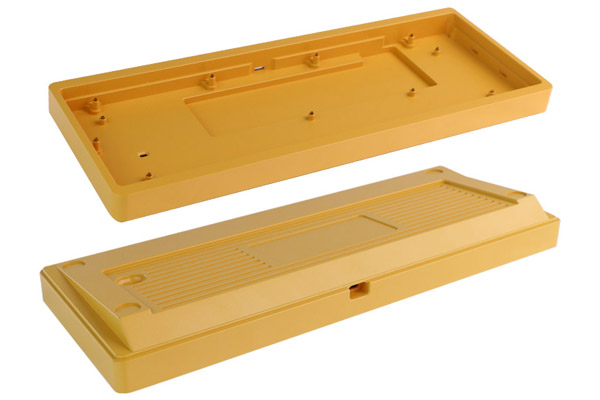
Why Choose Aluminum Electrophoresis? Can Plastic be Electrophoresed?
Electrocoating, also known as e-coating or electro deposition coating, is a versatile process primarily used for coating metal surfaces. While aluminum is a common substrate for electrocoating, plastic materials are generally not suitable for the traditional electrocoating process due to their non-conductive nature. Let’s explore the reasons for choosing aluminum electrocoating and the limitations with plastic materials:
Why Choose Aluminum Electrocoating:
Corrosion Resistance: Aluminum electrocoating provides excellent corrosion resistance. The process creates a uniform and protective coating that helps prevent oxidation and corrosion of the aluminum substrate. This is especially important for aluminum parts used in outdoor or corrosive environments.
Aesthetics: Electrocoating can achieve a smooth and consistent finish on aluminum surfaces. This is valuable for applications where a high-quality appearance is desired, such as in the automotive industry for vehicle parts like wheels, bumpers, and trim.
Durability: The electrocoated layer on aluminum is durable and can withstand wear, abrasion, and exposure to various environmental conditions. It contributes to the longevity of coated aluminum components.
Uniform Coverage: Electrocoating provides uniform and even coverage, even on complex and irregularly shaped aluminum parts. This ensures that all surfaces receive adequate protection.
Adhesion: The electrochemical nature of the process promotes strong adhesion between the coating and the aluminum substrate, reducing the risk of peeling or flaking.
Environmental Benefits: Aluminum electrocoating typically uses water-based coatings with low VOC emissions, making it an environmentally friendly choice compared to some other coating methods.
Limitations of Electrocoating for Plastic:
Non-Conductive Nature: Traditional electrocoating relies on the electrical conductivity of metal substrates. Plastic materials are non-conductive, making them incompatible with this process.
Alternative Coating Methods: For plastics, alternative coating methods like spray painting, dip coating, or powder coating are more suitable. These methods are designed to adhere to non-metallic surfaces and can provide protective and decorative finishes.
In summary, aluminum electrocoating is a reliable choice for enhancing the corrosion resistance, aesthetics, and durability of aluminum components. However, plastic materials require different coating methods due to their non-conductive nature. When selecting a coating process, it’s essential to consider the material type, the intended application, and the specific properties and requirements of the substrate to achieve the desired results.
Which metals are suitable for electrophoretic surface treatment?
Electrocoating, or e-coating, is a versatile surface treatment method primarily used for coating metal substrates. While it is most commonly applied to steel and aluminum, it can be used on various metals. Here are some metals that are suitable for electrocoating surface treatment:
Steel: Electrocoating is widely used on steel components across various industries. It provides corrosion resistance and can be applied to items such as automotive parts, appliances, and industrial equipment.
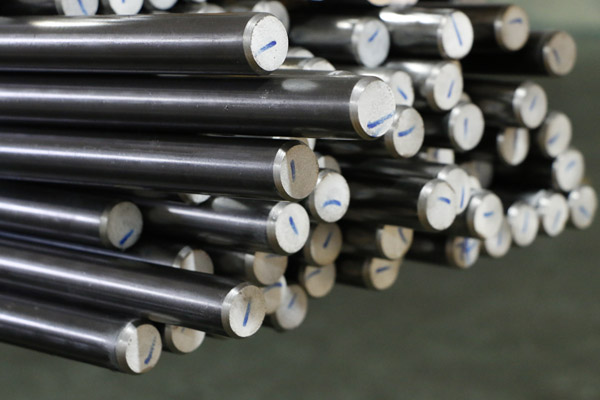
Aluminum: Aluminum is another metal commonly treated with electrocoating. This process enhances the corrosion resistance of aluminum parts and is used in applications like automotive trim, aerospace components, and architectural elements.

Galvanized Steel: Galvanized steel, which is steel coated with a layer of zinc, can benefit from electrocoating to provide additional protection against corrosion. It is used in outdoor structures and automotive parts.
Cast Iron: Electrocoating can be applied to cast iron surfaces, providing an extra layer of protection against rust and environmental factors. It is often used in industrial and architectural applications.
Copper: While less common, copper components can also be electrocoated for decorative purposes and added protection against tarnishing.

Brass: Similar to copper, brass parts can be electrocoated to enhance their appearance and protect against oxidation.

Zinc: Electrocoating can be used on zinc-plated surfaces to improve corrosion resistance, particularly in applications where both steel and zinc are present.
Magnesium: Electrocoating can be applied to magnesium components in certain industries, such as aerospace, to provide protection and enhance durability.
It’s important to note that the effectiveness of electrocoating depends on the specific metal substrate, surface preparation, and the coating materials used. The process involves immersing the metal object in a bath of paint particles and applying an electrical charge to attract the particles to the surface. Proper pretreatment and cleaning of the metal are essential to ensure adhesion and uniform coverage.
Before choosing electrocoating for a specific metal, it’s advisable to consult with coating professionals or experts who can provide guidance on material compatibility and the best practices for achieving the desired results.
Electrophoresis Process
The electrocoating process, also known as e-coating or electro deposition coating, involves several stages to apply a protective or decorative coating to metal surfaces. Here is an overview of the typical electrocoating process:
1. Pretreatment:
The metal parts are first subjected to a pretreatment process to clean and prepare the surface. This includes cleaning, degreasing, and surface conditioning to ensure proper adhesion of the coating.
2. Immersion in Electrocoating Bath:
The cleaned metal parts are immersed in an electrocoating bath, which contains a water-based paint or coating solution. This bath consists of positively charged paint particles (cations) and negatively charged metal parts (anodes).
3. Electrodeposition:
An electric current is applied to the electrocoating bath, creating an electrochemical reaction. The positively charged paint particles are attracted to the negatively charged metal parts. This electrostatic attraction causes the paint particles to deposit evenly onto the metal surfaces.
4. Coating Thickness Control:
The duration of the electrocoating process determines the thickness of the coating. Precise control of process parameters, such as voltage and time, ensures consistent coating thickness across all parts.
5. Rinsing:
After the electrocoating process, the coated metal parts are carefully rinsed to remove any excess paint particles and residual chemicals. Multiple rinse stages may be employed to ensure thorough cleaning.
6. Curing:
The coated metal parts are then cured to polymerize and solidify the coating. This is typically done in an oven at controlled temperatures. The curing process ensures the coating’s durability and adhesion.
7. Quality Control:
To ensure the quality of the electrocoated parts, a thorough inspection is performed. This may include checking for defects, proper coating thickness, and adhesion. Any necessary touch-ups or rework may be carried out at this stage.
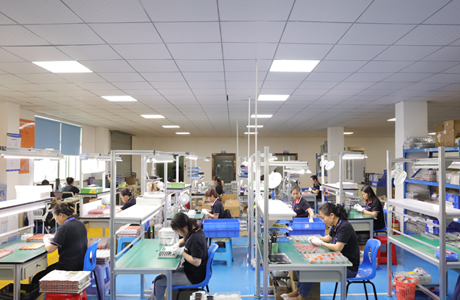
8. Additional Coating or Clear Coating (Optional):
Depending on the specific requirements, additional coatings or clear coats may be applied to enhance the finish or provide additional protection. Clear coats can improve the coating’s resistance to UV radiation and environmental factors.
9. Packaging and Shipping:
After passing quality control checks, the electrocoated parts are packaged and prepared for shipping to their final destination.
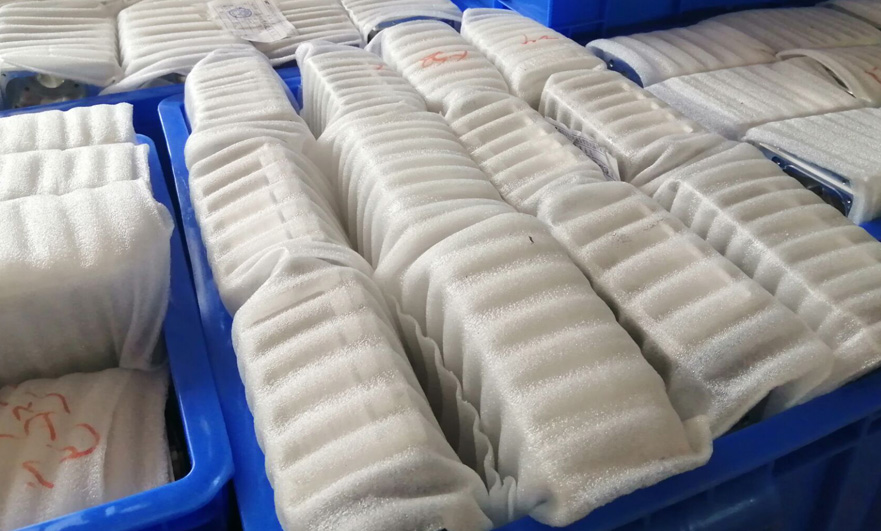
The electrocoating process is known for its ability to provide uniform and durable coatings, making it suitable for a wide range of applications, including automotive, appliances, industrial equipment, and architectural elements. Proper surface preparation, control of process parameters, and adherence to industry standards are essential for achieving high-quality electrocoated finishes.
Advantages and Disadvantages of Electrophoresis
Electrocoating, also known as e-coating or electro deposition coating, offers several advantages and has a few limitations. Here’s a breakdown of its key advantages and disadvantages:
Advantages of Electrocoating:
Uniform Coating: Electrocoating provides consistent and uniform coverage, even on complex and irregularly shaped parts. This ensures that all surfaces receive adequate protection.
Corrosion Resistance: It offers excellent corrosion resistance, making it ideal for metal parts exposed to harsh environments or outdoor conditions. The uniform coating helps prevent rust and oxidation.
Aesthetics: Electrocoating can achieve a smooth and attractive finish. It is used for decorative purposes, providing an appealing appearance to coated products.
Adhesion: The electrochemical process ensures strong adhesion between the coating and the metal substrate. This reduces the risk of peeling or flaking.
Environmental Benefits: Electrocoating typically uses water-based coatings with low VOC (volatile organic compound) emissions, making it environmentally friendly compared to some other coating methods.
Efficiency: It is efficient in terms of material usage, as it minimizes overspray and waste. The process can be highly automated, leading to cost savings in large-scale production.
Versatility: Electrocoating can be applied to various metals, including steel, aluminum, and zinc-coated substrates, making it suitable for a wide range of industries.
Disadvantages of Electrocoating:
Material Limitations: Electrocoating is primarily designed for metal substrates. It is not suitable for non-metallic materials like plastics, ceramics, or wood due to their non-conductive nature.
Complex Process: The electrocoating process is relatively complex and requires specialized equipment and expertise. Setting up and maintaining electrocoating facilities can be costly.
Limited Film Thickness: Achieving very thick coatings with electrocoating can be challenging. This process is better suited for moderately thick to thin coatings.
Energy Consumption: The curing stage of electrocoating, typically done in ovens, can consume a significant amount of energy, contributing to operational costs.
Preparation Requirements: Proper surface preparation is crucial for successful electrocoating. Inadequate cleaning and pretreatment can lead to adhesion issues and defects.
Limited to Metal Substrates: Electrocoating is not suitable for other materials commonly used in manufacturing, limiting its applicability in certain industries.
Overall, electrocoating is a valuable surface treatment method known for its ability to provide uniform and durable coatings, especially for metal parts. While it has some limitations, its advantages make it a preferred choice for various applications, including automotive, appliances, and industrial equipment. Proper process control and maintenance are essential to maximize the benefits of electrocoating.
Classification of Electrophoresis
Electrocoating, also known as e-coating or electro deposition coating, can be classified into two primary categories based on the polarity of the electrical charge used in the process: anodic electrocoating and cathodic electrocoating.
1. Anodic Electrocoating (Anodic E-Coat):
In anodic electrocoating, the metal parts to be coated are used as the anode (positive electrode), and they are immersed in a bath of paint or coating solution with negatively charged paint particles (cations).
When an electric current is applied, the positively charged metal parts repel the positively charged paint particles. As a result, the paint particles are deposited onto the metal surfaces, forming a protective coating.
Anodic electrocoating is commonly used for decorative applications and can provide a smooth and visually appealing finish.
2. Cathodic Electrocoating (Cathodic E-Coat):
In cathodic electrocoating, the metal parts to be coated are used as the cathode (negative electrode), and they are immersed in a bath of paint or coating solution with positively charged paint particles (anions).
When an electric current is applied, the positively charged metal parts attract the negatively charged paint particles. This causes the paint particles to deposit evenly onto the metal surfaces, forming a protective coating.
Cathodic electrocoating is known for its excellent corrosion resistance properties and is often used in applications where long-term protection against rust and environmental factors is crucial.
Both anodic and cathodic electrocoating processes offer advantages in terms of uniform coverage, corrosion resistance, and adhesion. The choice between them depends on the specific requirements of the application and the desired properties of the final coating. Each type of electrocoating has its own set of benefits and is used in various industries to provide protection and enhance the appearance of metal parts.
What Surface Effects do Electrophoretic Aluminum Parts Exhibit?
Electrocoated aluminum parts can exhibit various surface effects and finishes depending on the specific coating material, process parameters, and desired outcome. Here are some common surface effects and appearances achieved with electrocoating on aluminum parts:
Smooth and Glossy Finish: Electrocoating can produce a smooth and glossy surface finish, giving aluminum parts a sleek and visually appealing appearance. This finish is often used for decorative purposes and can enhance the overall aesthetics of the parts.
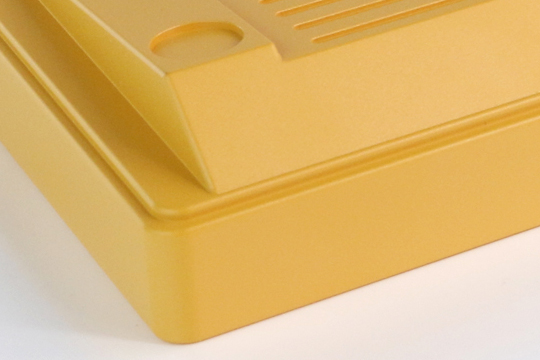
Matte Finish: By adjusting the formulation of the coating material and process conditions, a matte or satin finish can be achieved. This finish reduces the glossiness of the surface while maintaining a uniform appearance.
Textured Finish: Electrocoating can be used to create textured surfaces on aluminum parts. This is achieved by incorporating texturizing agents or additives into the coating material, resulting in a tactile or patterned surface.
Color Variation: Electrocoating can provide a wide range of color options, allowing for customized appearances. Aluminum parts can be coated in various colors, including standard colors, metallic shades, and custom hues to match specific design requirements.
Transparency: Some electrocoating formulations can create a transparent or translucent finish on aluminum parts. This effect is often used when a protective coating is desired without altering the natural appearance of the aluminum substrate.
Two-Tone or Multi-Tone: Electrocoating allows for the creation of two-tone or multi-tone finishes, where different areas of the aluminum part have distinct colors or effects. This is used for design and branding purposes.
Pattern Replication: Electrocoating can replicate intricate patterns or designs onto aluminum surfaces. This is particularly useful for achieving decorative effects like wood grain, marble, or custom graphics.
Corrosion Protection: While not a visual effect, electrocoating provides excellent corrosion resistance, ensuring that the aluminum parts maintain their appearance and structural integrity over time, even in harsh environments.
The specific surface effect achieved on electrocoated aluminum parts can be customized to meet the requirements of various industries and applications, from automotive components to architectural elements. The choice of coating material, process parameters, and quality control measures play a significant role in determining the final appearance and performance of the electrocoated finish.
Electrophoresis and Other Surface Treatments: Differences, Surface Effects and Cost Comparison
Electrocoating (e-coating) and other surface treatment methods differ in several ways, including their processes, surface effects, and cost considerations. Let’s compare electrocoating to other common surface treatment methods in terms of these factors:
1. Electrocoating (E-Coating):
Process: Electrocoating involves immersing metal parts in an electrically charged bath of paint or coating solution. The application of an electric current causes the coating to adhere to the metal surfaces. It is particularly effective for metal substrates.
Surface Effects: Electrocoating can produce a range of surface effects, including smooth, glossy finishes, matte finishes, and textured or patterned surfaces. It offers customization in terms of color and appearance.
Cost Consideration: Electrocoating can be cost-effective for large-scale production due to its efficiency and material savings. Initial setup costs for the e-coating facility can be relatively high.
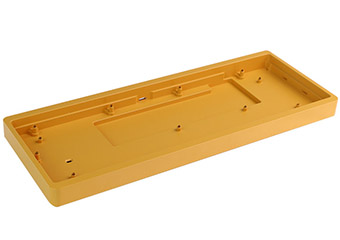
2. Powder Coating:
Process: Powder coating involves spraying electrostatically charged dry powder onto metal surfaces. The coated parts are then cured in an oven, causing the powder to melt and form a durable finish.
Surface Effects: Powder coating provides a smooth, even finish with a wide range of colors and textures. It can be used for decorative and protective purposes.
Cost Consideration: Powder coating is cost-effective for small to medium-sized production runs. It is known for its durability and resistance to chipping and fading.
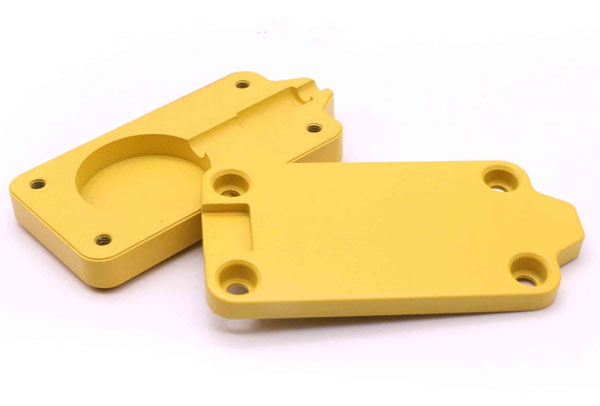
3. Painting:
Process: Liquid paint coating involves applying liquid paint directly to the surface of metal or non-metal substrates. It can be done through spraying, brushing, or dipping.
Surface Effects: Liquid paint coating offers versatility in terms of appearance, including glossy, matte, and textured finishes. It can be used for both metal and non-metal surfaces.
Cost Consideration: The cost of liquid paint coating can vary depending on the type of paint, application method, and substrate. It is suitable for both small and large production runs.
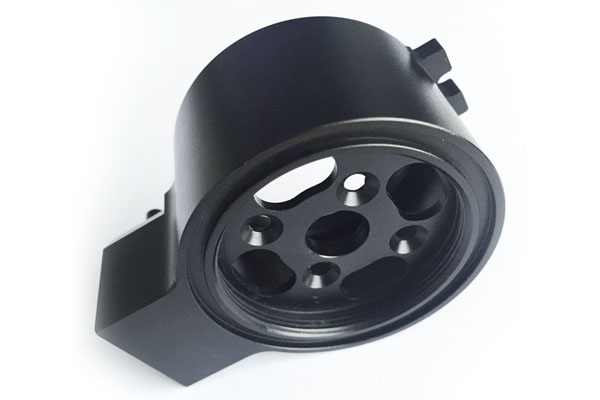
4. Anodizing:
Process: Anodizing is an electrochemical process primarily used for aluminum. It forms a protective oxide layer on the surface of aluminum by immersing it in an electrolyte solution and applying an electric current.
Surface Effects: Anodizing produces a hard, corrosion-resistant surface with a matte or satin finish. It can be customized with various dye colors.
Cost Consideration: Anodizing can be cost-effective for aluminum parts but may not be suitable for other metals. It offers excellent corrosion resistance.

5. Plating (Electroplating):
Process: Plating involves depositing a layer of metal onto the surface of a substrate, often for decorative or protective purposes. It can be used on various metals.
Surface Effects: Plating can produce metallic finishes, such as chrome, nickel, and gold. It offers excellent decorative effects.
Cost Consideration: Plating costs can vary significantly based on the metal being plated and the thickness of the plating layer. It is commonly used for high-end decorative applications.
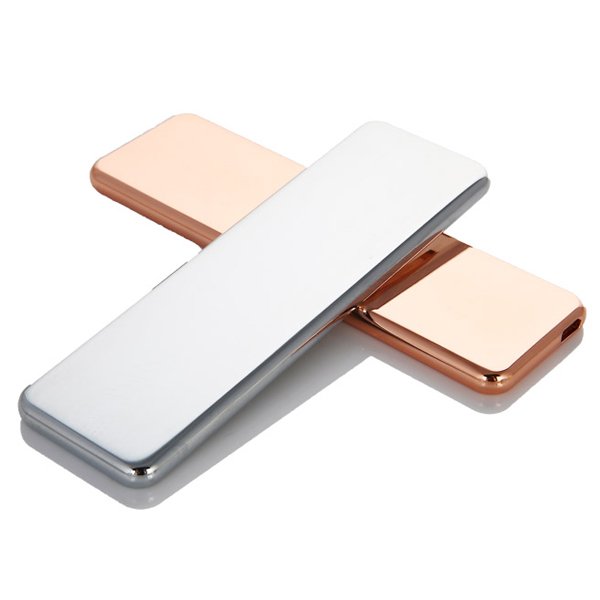
In summary, the choice of surface treatment method depends on the material being treated, the desired surface effect, and cost considerations. Electrocoating is particularly suitable for metal substrates and offers customization in appearance. Powder coating, liquid paint coating, anodizing, and plating each have their unique characteristics and applications, catering to a wide range of industries and requirements.
Electrophoretic Surface Treatment Applications
Electrocoating, also known as e-coating or electro deposition coating, is widely used across various industries for both decorative and protective purposes. Its versatility and ability to provide uniform and durable coatings make it suitable for numerous applications. Here are some common applications of electrocoating:
Automotive Parts: Electrocoating is extensively used in the automotive industry to coat a wide range of components, including vehicle bodies, chassis, wheels, brackets, and suspension parts. It provides corrosion resistance, enhances aesthetics, and ensures the longevity of automotive components.
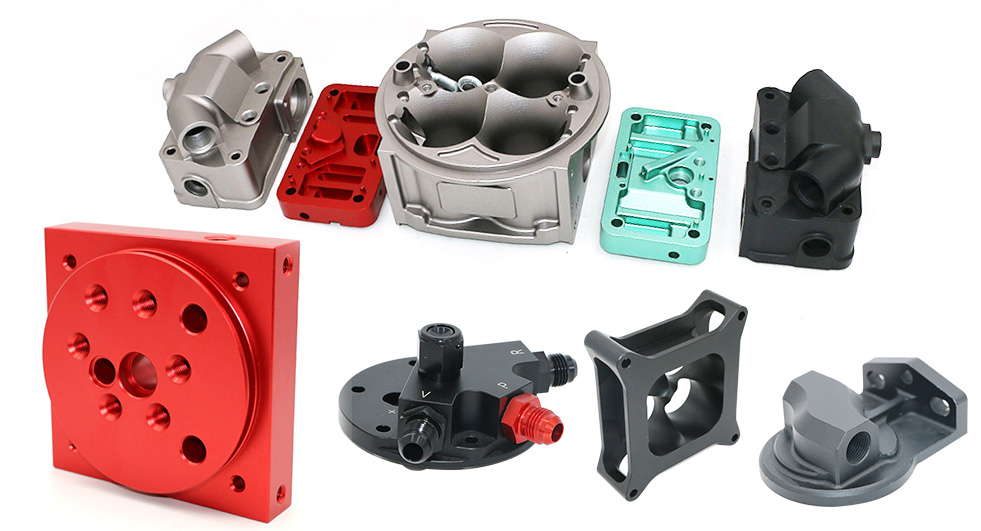
Appliances: Home appliances like refrigerators, washing machines, ovens, and dishwashers often undergo electrocoating to protect against rust and wear while maintaining an attractive appearance.
Aerospace Components: Critical aerospace parts and components, such as aircraft frames, landing gear, and engine parts, benefit from electrocoating to withstand harsh environmental conditions and maintain structural integrity.
Architectural Elements: Electrocoating is used on architectural elements like aluminum window frames, curtain walls, and railings to provide corrosion resistance and an aesthetically pleasing finish. It ensures long-lasting performance in outdoor environments.
Industrial Equipment: Electrocoating is applied to industrial equipment, such as machinery, valves, and pumps, to protect against corrosion and extend the service life of these essential components.
Furniture: Metal furniture, including outdoor furniture, can be electrocoated to prevent corrosion and enhance the appearance of the pieces.
Lighting Fixtures: Electrocoating is used in the lighting industry to provide both protection and aesthetics for fixtures, ensuring they maintain their appearance over time.
Firearms: Gun manufacturers often use electrocoating to provide a durable and corrosion-resistant finish to firearms and related components.
Electrical Enclosures: Electrical enclosures made from metal materials are electrocoated to protect them from environmental factors, ensuring the safety and reliability of electrical equipment.
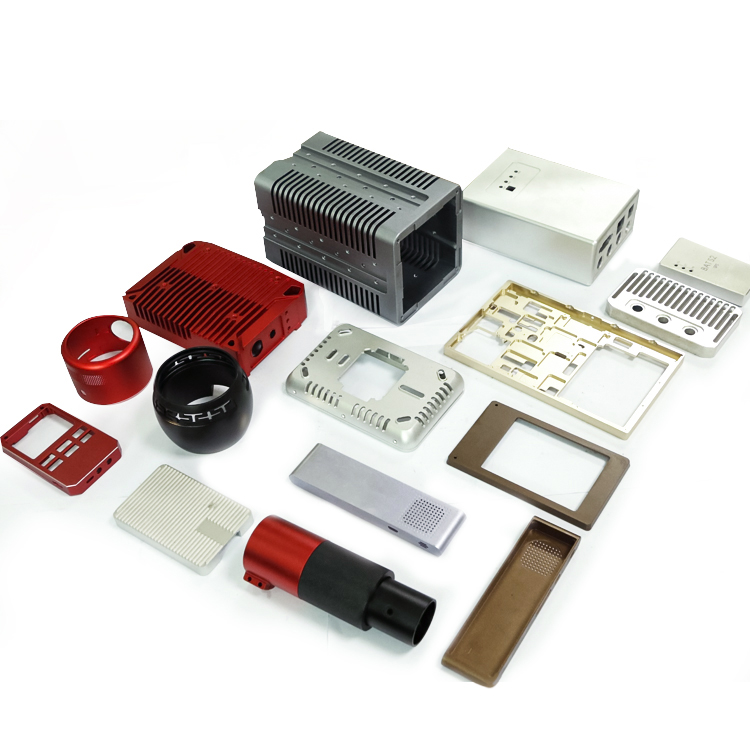
Consumer Goods: Various consumer goods, such as bicycles, exercise equipment, and gardening tools, benefit from electrocoating to resist wear and tear, particularly in outdoor or corrosive environments.
Medical Devices: Electrocoating can be used on medical equipment and devices to provide a sterile and corrosion-resistant surface.
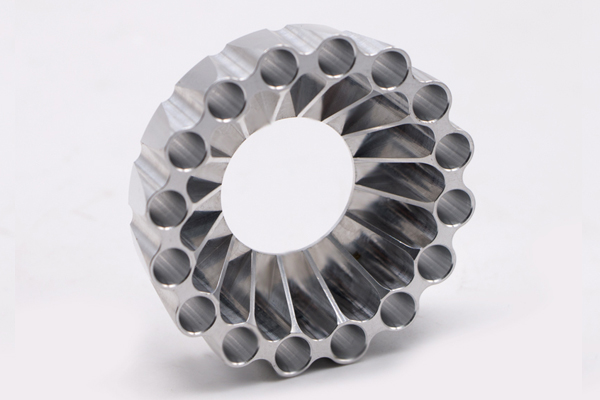
Custom Fabrication: Electrocoating is also utilized in custom metal fabrication projects, where components or structures need to meet specific performance and aesthetic requirements.
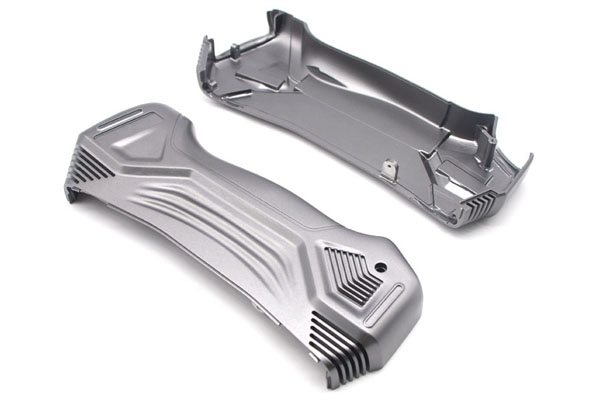
Electrocoating is chosen for these applications because of its ability to provide a consistent and uniform coating that adheres well to metal substrates. The process offers customization in terms of appearance, including various colors and finishes. Additionally, it meets stringent industry standards for corrosion resistance and durability, making it a preferred choice in many manufacturing sectors.
Problems and Precautions for Electrophoretic Aluminum Parts
When electrocoating aluminum parts, there are several key issues and considerations that manufacturers and coating professionals should keep in mind to ensure a successful coating process. Here are some common problems and precautions when electrocoating aluminum components:
Common Issues:
Aluminum Pretreatment: Proper surface preparation is crucial for electrocoating aluminum. Inadequate cleaning, degreasing, or pretreatment can lead to adhesion problems and defects in the coating.
Aluminum Alloy Compatibility: Different aluminum alloys may have varying levels of surface reactivity. It’s essential to choose the appropriate pretreatment and coating materials that are compatible with the specific aluminum alloy being used.
Corrosion Resistance: While electrocoating provides corrosion resistance, aluminum is naturally resistant to corrosion. Proper pretreatment and surface preparation are essential to ensure the coating adheres effectively and provides additional protection.
Quality Control: Monitoring the coating process for defects and ensuring proper cure is essential. Insufficient cure times or inadequate curing temperatures can lead to coating defects.
Precautions and Considerations:
Surface Cleaning: Ensure thorough cleaning and degreasing of aluminum parts before the electrocoating process to remove contaminants that can hinder adhesion.
Pretreatment: Implement a suitable pretreatment process to promote adhesion and improve corrosion resistance. Common pretreatment methods for aluminum include chromate conversion coatings or phosphate-based treatments.
Aluminum Alloys: Be aware of the specific aluminum alloy being coated and select the appropriate pretreatment and coating materials to match its characteristics.
Cure Process: Pay close attention to the curing process. Ensure that the coated aluminum parts are exposed to the correct curing temperatures and times to achieve proper adhesion and coating performance.
Quality Control: Implement a comprehensive quality control process to detect defects such as runs, sags, pinholes, or poor coverage. Visual inspections and testing should be conducted regularly.
Racking and Hanging: Proper racking and hanging techniques are essential to ensure that all surfaces of the aluminum parts are evenly coated. Inadequate racking can result in uneven coating thickness.
Maintenance: Regular maintenance of the electrocoating equipment, including cleaning tanks and ensuring consistent bath chemistry, is crucial to maintain process efficiency.
Environmental Compliance: Electrocoating typically uses water-based coatings, which are more environmentally friendly. Ensure compliance with local environmental regulations and dispose of waste materials properly.
Operator Training: Adequate training for operators and technicians involved in the electrocoating process is essential to minimize errors and defects.
Testing: Conduct adhesion tests, salt spray tests, and other relevant quality assessments to verify the performance and durability of the electrocoated aluminum parts.
By addressing these issues and following these precautions, manufacturers can achieve high-quality, durable electrocoated finishes on aluminum parts, ensuring both aesthetic appeal and corrosion resistance.
Conclusion
Do you know how to choose the right finish for your project? CNCMF has 15 years of experience in surface treatment experts to choose the appropriate surface treatment for you to improve the surface texture and performance of CNC parts.
Learn about the electrophoretic surface treatment process, advantages and applications in this article. If you want to know more about electrophoretic surface treatment, please contact us immediately. CNCMF can provide a wide range of CNC machining and manufacturing capabilities and surface treatment services for steel, aluminum, titanium, copper and other materials. Our team of professional engineers can choose the appropriate surface treatment for you to meet all your CNC machined parts production needs and obtain the best results. Best, competitive price. Why not give CNCMF a try and contact us now to get a quote.

Electrophoresis FAQs
Certainly! Here are some common questions and answers related to electrocoating (e-coating):
Q1: What is electrocoating (e-coating)?
A1: Electrocoating, also known as e-coating or electro deposition coating, is a process in which a metal part is immersed in a bath of paint or coating solution. An electric current is applied to attract the paint particles to the metal surface, creating a uniform and durable coating.
Q2: What materials can be electrocoated?
A2: Electrocoating is primarily used for metal substrates, including steel, aluminum, galvanized steel, and others. It is not suitable for non-metallic materials like plastics or wood.
Q3: What are the advantages of electrocoating?
A3: Electrocoating offers several advantages, including uniform coating thickness, excellent corrosion resistance, customization in terms of appearance, and the ability to coat complex shapes effectively.
Q4: Is electrocoating environmentally friendly?
A4: Yes, electrocoating typically uses water-based coatings with low VOC (volatile organic compound) emissions, making it environmentally friendly compared to some other coating methods.
Q5: How is the thickness of the electrocoating controlled?
A5: The thickness of the electrocoating is controlled by adjusting the process parameters, including the voltage, immersion time, and the type of coating material used. Precise control ensures consistent coating thickness.
Q6: Can electrocoating be used for both decorative and protective purposes?
A6: Yes, electrocoating is versatile and can serve both decorative and protective functions. It offers options for various colors and surface finishes, making it suitable for aesthetic as well as corrosion-resistant coatings.
Q7: What industries commonly use electrocoating?
A7: Electrocoating is used in various industries, including automotive, appliances, aerospace, architecture, industrial equipment, and more, for coating a wide range of components and parts.
Q8: What quality control measures are important in electrocoating?
A8: Quality control in electrocoating includes regular inspections for defects, adherence to proper curing processes, adhesion testing, salt spray testing for corrosion resistance, and maintaining consistent bath chemistry.
Q9: Is electrocoating suitable for high-volume production?
A9: Yes, electrocoating is often used in high-volume production due to its efficiency, uniformity, and material-saving characteristics. It is particularly cost-effective for large-scale manufacturing.
Q10: Can electrocoated parts be touched up or repaired if defects are found?
A10: Yes, electrocoated parts can be touched up or reworked if defects are detected during quality control. This allows for the correction of minor issues without the need for recoating the entire part.
These questions and answers provide a basic overview of electrocoating, its applications, and key considerations. Manufacturers often consult with coating professionals to ensure successful electrocoating processes and high-quality finishes.